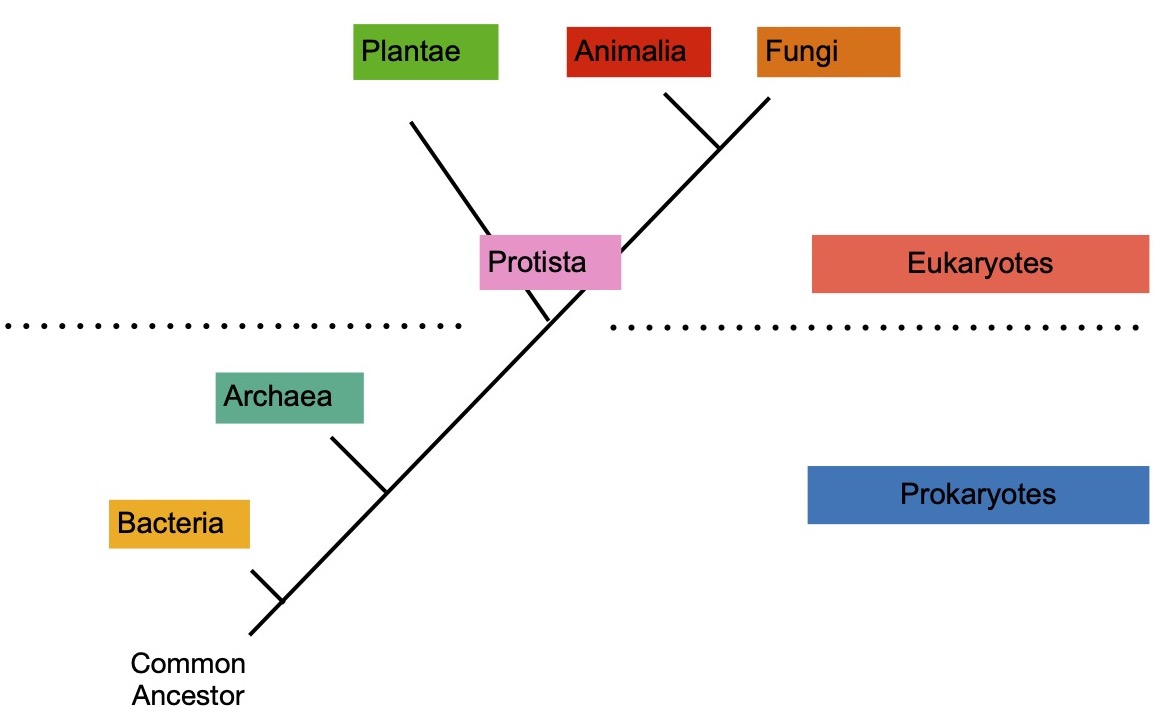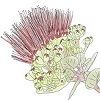6.1: What defines a plant?
- Page ID
- 59237
\( \newcommand{\vecs}[1]{\overset { \scriptstyle \rightharpoonup} {\mathbf{#1}} } \)
\( \newcommand{\vecd}[1]{\overset{-\!-\!\rightharpoonup}{\vphantom{a}\smash {#1}}} \)
\( \newcommand{\id}{\mathrm{id}}\) \( \newcommand{\Span}{\mathrm{span}}\)
( \newcommand{\kernel}{\mathrm{null}\,}\) \( \newcommand{\range}{\mathrm{range}\,}\)
\( \newcommand{\RealPart}{\mathrm{Re}}\) \( \newcommand{\ImaginaryPart}{\mathrm{Im}}\)
\( \newcommand{\Argument}{\mathrm{Arg}}\) \( \newcommand{\norm}[1]{\| #1 \|}\)
\( \newcommand{\inner}[2]{\langle #1, #2 \rangle}\)
\( \newcommand{\Span}{\mathrm{span}}\)
\( \newcommand{\id}{\mathrm{id}}\)
\( \newcommand{\Span}{\mathrm{span}}\)
\( \newcommand{\kernel}{\mathrm{null}\,}\)
\( \newcommand{\range}{\mathrm{range}\,}\)
\( \newcommand{\RealPart}{\mathrm{Re}}\)
\( \newcommand{\ImaginaryPart}{\mathrm{Im}}\)
\( \newcommand{\Argument}{\mathrm{Arg}}\)
\( \newcommand{\norm}[1]{\| #1 \|}\)
\( \newcommand{\inner}[2]{\langle #1, #2 \rangle}\)
\( \newcommand{\Span}{\mathrm{span}}\) \( \newcommand{\AA}{\unicode[.8,0]{x212B}}\)
\( \newcommand{\vectorA}[1]{\vec{#1}} % arrow\)
\( \newcommand{\vectorAt}[1]{\vec{\text{#1}}} % arrow\)
\( \newcommand{\vectorB}[1]{\overset { \scriptstyle \rightharpoonup} {\mathbf{#1}} } \)
\( \newcommand{\vectorC}[1]{\textbf{#1}} \)
\( \newcommand{\vectorD}[1]{\overrightarrow{#1}} \)
\( \newcommand{\vectorDt}[1]{\overrightarrow{\text{#1}}} \)
\( \newcommand{\vectE}[1]{\overset{-\!-\!\rightharpoonup}{\vphantom{a}\smash{\mathbf {#1}}}} \)
\( \newcommand{\vecs}[1]{\overset { \scriptstyle \rightharpoonup} {\mathbf{#1}} } \)
\( \newcommand{\vecd}[1]{\overset{-\!-\!\rightharpoonup}{\vphantom{a}\smash {#1}}} \)
\(\newcommand{\avec}{\mathbf a}\) \(\newcommand{\bvec}{\mathbf b}\) \(\newcommand{\cvec}{\mathbf c}\) \(\newcommand{\dvec}{\mathbf d}\) \(\newcommand{\dtil}{\widetilde{\mathbf d}}\) \(\newcommand{\evec}{\mathbf e}\) \(\newcommand{\fvec}{\mathbf f}\) \(\newcommand{\nvec}{\mathbf n}\) \(\newcommand{\pvec}{\mathbf p}\) \(\newcommand{\qvec}{\mathbf q}\) \(\newcommand{\svec}{\mathbf s}\) \(\newcommand{\tvec}{\mathbf t}\) \(\newcommand{\uvec}{\mathbf u}\) \(\newcommand{\vvec}{\mathbf v}\) \(\newcommand{\wvec}{\mathbf w}\) \(\newcommand{\xvec}{\mathbf x}\) \(\newcommand{\yvec}{\mathbf y}\) \(\newcommand{\zvec}{\mathbf z}\) \(\newcommand{\rvec}{\mathbf r}\) \(\newcommand{\mvec}{\mathbf m}\) \(\newcommand{\zerovec}{\mathbf 0}\) \(\newcommand{\onevec}{\mathbf 1}\) \(\newcommand{\real}{\mathbb R}\) \(\newcommand{\twovec}[2]{\left[\begin{array}{r}#1 \\ #2 \end{array}\right]}\) \(\newcommand{\ctwovec}[2]{\left[\begin{array}{c}#1 \\ #2 \end{array}\right]}\) \(\newcommand{\threevec}[3]{\left[\begin{array}{r}#1 \\ #2 \\ #3 \end{array}\right]}\) \(\newcommand{\cthreevec}[3]{\left[\begin{array}{c}#1 \\ #2 \\ #3 \end{array}\right]}\) \(\newcommand{\fourvec}[4]{\left[\begin{array}{r}#1 \\ #2 \\ #3 \\ #4 \end{array}\right]}\) \(\newcommand{\cfourvec}[4]{\left[\begin{array}{c}#1 \\ #2 \\ #3 \\ #4 \end{array}\right]}\) \(\newcommand{\fivevec}[5]{\left[\begin{array}{r}#1 \\ #2 \\ #3 \\ #4 \\ #5 \\ \end{array}\right]}\) \(\newcommand{\cfivevec}[5]{\left[\begin{array}{c}#1 \\ #2 \\ #3 \\ #4 \\ #5 \\ \end{array}\right]}\) \(\newcommand{\mattwo}[4]{\left[\begin{array}{rr}#1 \amp #2 \\ #3 \amp #4 \\ \end{array}\right]}\) \(\newcommand{\laspan}[1]{\text{Span}\{#1\}}\) \(\newcommand{\bcal}{\cal B}\) \(\newcommand{\ccal}{\cal C}\) \(\newcommand{\scal}{\cal S}\) \(\newcommand{\wcal}{\cal W}\) \(\newcommand{\ecal}{\cal E}\) \(\newcommand{\coords}[2]{\left\{#1\right\}_{#2}}\) \(\newcommand{\gray}[1]{\color{gray}{#1}}\) \(\newcommand{\lgray}[1]{\color{lightgray}{#1}}\) \(\newcommand{\rank}{\operatorname{rank}}\) \(\newcommand{\row}{\text{Row}}\) \(\newcommand{\col}{\text{Col}}\) \(\renewcommand{\row}{\text{Row}}\) \(\newcommand{\nul}{\text{Nul}}\) \(\newcommand{\var}{\text{Var}}\) \(\newcommand{\corr}{\text{corr}}\) \(\newcommand{\len}[1]{\left|#1\right|}\) \(\newcommand{\bbar}{\overline{\bvec}}\) \(\newcommand{\bhat}{\widehat{\bvec}}\) \(\newcommand{\bperp}{\bvec^\perp}\) \(\newcommand{\xhat}{\widehat{\xvec}}\) \(\newcommand{\vhat}{\widehat{\vvec}}\) \(\newcommand{\uhat}{\widehat{\uvec}}\) \(\newcommand{\what}{\widehat{\wvec}}\) \(\newcommand{\Sighat}{\widehat{\Sigma}}\) \(\newcommand{\lt}{<}\) \(\newcommand{\gt}{>}\) \(\newcommand{\amp}{&}\) \(\definecolor{fillinmathshade}{gray}{0.9}\)All living organisms on Earth are divided into three domains (groups): Bacteria, Archaea, and Eukarya. Bacteria and Archaea are grouped in an informal category called prokaryotes, small unicellular organisms (smaller than the tip of a needle) that lack a nucleus and membrane-bound organelles. Eukaryotes, on the other hand, are composed of bigger cells that have a nucleus and membrane-bound organelles and they can be unicellular or multicellular. Domain Eukarya is further divided into four Kingdoms (groups; Figure \(\PageIndex{1}\)): plants (Plantae), animals (Animalia), fungi (Fungi), and protists (Protista). Both prokaryotes and eukaryotes have cell membranes, ribosomes, and genetic material (DNA and RNA).

Plants are multicellular photosynthetic organisms that have unique organelles and compounds, setting them apart from other eukaryotes. Specialized plant organelles, that are not found in animal cells, are chloroplasts for photosynthesis, a central vacuole to store water, and a cell wall to provide protection and structure to the plant cell. Other groups of organisms also have cell walls, like some bacteria, fungi, and some protists, but in plants, the cell wall is mainly composed of a substance called cellulose, while in other organisms it is composed of other substances, like chitin in fungi. There are also other organisms capable of performing photosynthesis, like some bacteria, and some protists (algae). Plants have green pigments called chlorophyll a and chlorophyll b, which are involved in photosynthesis.
Origin of plants
Plants are well known for their crucial role in producing oxygen. About 16% of the modern Earth’s atmosphere is constituted by oxygen, but a couple of billion years ago it did not have any oxygen, so it could not support life as we know it today. Around 2.8 billion years ago a group of bacteria started to perform an innovative process called photosynthesis in the Earth’s oceans, and over time oxygen accumulated in the atmosphere until it was high enough to support oxygen-breathing creatures, like animals.
For millions of years, algae and blue-green algae (bacteria) were the main photosynthetic organisms on Earth. The first true plants evolved from green algae, probably from a Class (group) of green algae called Zygnematophyceae (Cheng et al., 2019; Figure \(\PageIndex{2}\)). Because the ancestors of terrestrial plants were aquatic, land plants had to adapt to new challenges brought by the dry conditions inherent to terrestrial environments. Some of the most notorious plant adaptations to life on land were the development of a physical barrier to prevent desiccation (drying out), specialized cells for water and nutrient transport, mechanical support to stay upright, anchoring mechanisms, specialized mechanisms to transfer the reproductive cells (gametes) from one plant to another, and the development of protective cell layers around the spore- and gamete-producing structures.
The physical barrier plants developed to prevent desiccation is called a cuticle, a waxy layer that covers all the aerial surfaces of a plant to help prevent desiccation. All living land plants have a cuticle. The Zygnematophyceae algae are hypothesized to have acquired genes from soil bacteria that help prevent desiccation (Cheng et al., 2019). These genes are currently found in land plants and bacteria, but not any other algae, adding support to the hypothesis that these green algae are the ancestor of all land plants. When plants colonized land they also had to redesign the way sexual reproduction took place. In aquatic environments, gametes just swim or float to another plant, which is not possible in most terrestrial environments. Land plants developed drought-resistant spores that could survive on dry land, as well as enclosed gamete or spore producing structures with several layers of cells to protect them from drying out. Some land plants, like bryophytes, still have swimming sperm, which confine them to wet environments.
In aquatic environments water and dissolved minerals are readily available and easily absorbed by plants via osmosis. Land plants, in contrast, had to develop specialized cells to be able to transport water and dissolved nutrients from the soil. Most of these specialized cells look like narrow tubes, where water is transported from the roots to the leaves via the stem. These transporting cells are also related to the newly required mechanical support, as they have fortified cell walls to be able to withstand the physical forces involved in transporting fluids (Niklas, 1997). Mechanical support is required for vertical growth outside of a water environment and as plants seek to reach the most sunlight to be able to perform photosynthesis, growing vertically is beneficial for many of them. Most land plants developed a cylindrical stem that provided efficient means of mechanical support (Niklas, 1986), which could explain the general shape of most plant stems. Bryophytes do not have these conducting tissues, and therefore are short, while plants that have them, like flowering plants, can grow taller. The development of an upright position in plants was also accompanied by the development of an anchoring mechanism, or roots. The earliest evidence of roots dates back to the early Devonian 408 million years ago (Erick et al., 1998).
The major extant (living) groups of plants are non-vascular plants, seedless vascular plants, Gymnosperms, and Angiosperms. The first evidence of terrestrial plants is fossil spores from the late Ordovician (~450 Ma; Gray, 1985; Appendix 1). From bryophytes (the oldest plant group) to flowering plants (the most recent plant group), plants have acquired unique characteristics that allow them to survive and thrive in different terrestrial environments (Figure \(\PageIndex{3}\)). Plants have been able to colonize all terrestrial ecosystems on Earth, including mountains, islands, sand dunes, rainforests, and deserts.

In the following chapters, we will explore the main characteristics of each plant group and learn about important economic or cultural uses for each. Learning about the basic characteristics of each group is the first step in identifying plants. For example, if you go hiking and find an interesting plant you want to identify, you can start by identifying the plant’s group. By eliminating the other groups, you can get closer to an identification.


